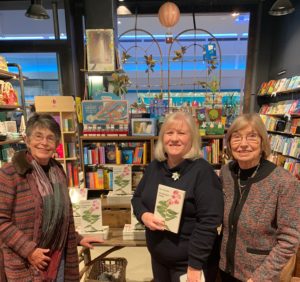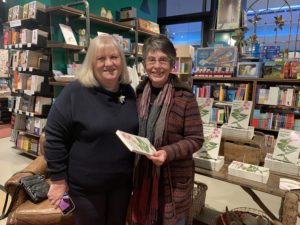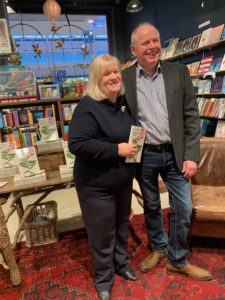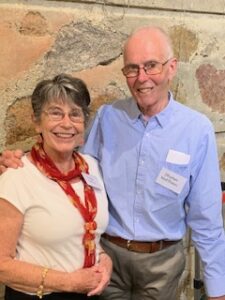
Stephen Matthews OAM, founder of Ginninderra Press passed away on Wednesday 25 September 2024.
I REMEMBER THE EXCITEMENT WHEN STEPHEN WAS RECOMMENDED FOR THE AOM.
There was great excitement about what to wear at the garden party at Governors’House and all the feelings about the honour . Brenda kept all the accolation and it was so well deserved. Now I look back and am thrilled Stepen was honoured while he was well and that we could all ho
Stephen accepted my first book of poetry to be published by his publishing house Ginninderra Press. I had had severeal rejections and I was over the moon to receive his acceptance. It took a year from acceptance to publication it was a hard journey to get a cover and blurbs, introduction and dedication but finally A Call to Listen was out in the world like a new babe coming into first light. Of course it affirmed me as a poet and encouraged me to write more and hence further books arrived . I am not the only one. Hundreds of poets have had the same success with Stephen as he affirmed and published more and more poets bringing their light to the world. His partner Brenda worked at Chapbooks and a publication The Crow bringing more poetry into the world.
What a tragedy for cancer to return and knock Stephen around for a second time and to watch their world come tumbling down. Stephen sold the publishing business to Debbie and we hope to continue so that poets are heard in this very noisy world where poetry is neglected because not many have the time or space these days to enjoy.
In 2019 Stephen and Brenda came from South Australia where they were established to launch a new book Mountain Mist a Ginninderra Anthology and to incorporate Brenda’s 70th birthday and we met and got to know each other . It was a real Ginninderra Family Celebration.

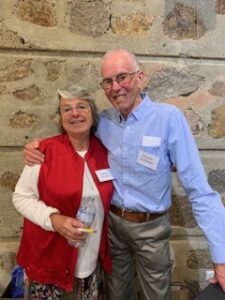
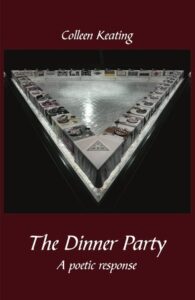

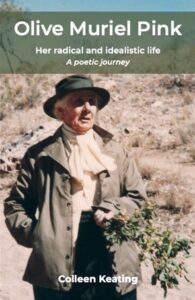
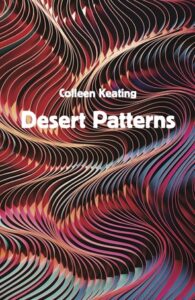
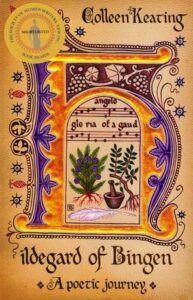
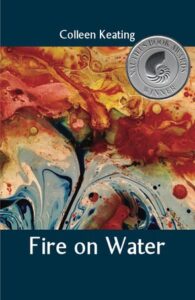

DEBBIE WROTE
I first met Stephen as a young publisher’s representative when he was manager of the ANU Uni Coop. It was the heyday of publishing, when hardbacks preceded paperbacks, literary fiction and non-fiction titles were piled high, launches de rigueur and sales abounding.
As a bookseller, Stephen was discerning and erudite and as well-read as they come. Perhaps not surprising given his Cambridge University education in the classics, moral science and philosophy. Stephen taught high school history both prior to emigrating to Australia and for some years upon his arrival. Subsequently, his joy in books radiated in the writing of reviews, author profiles and articles for the Canberra Times and the Australian Book Review journal, as well assessing manuscripts for large publishing houses, and judging literary competitions and awards.
As mainstream publishing began to contract with acquisitions and mergers upsetting the status quo, Stephen somewhat counterintuitively saw an opportunity. In 1996 Ginninderra Press was born with the express mission of publishing new and emerging authors, relative unknowns, writing in eclectic, not always fashionable genres, books that did not necessarily have a commercial orientation, but books that mattered, nonetheless. Traversing poetry, memoir, history, novella, anthology and non-fiction prose, the primary criteria – that these were titles in which Stephen believed.
Over the course of the next 28 years, taking in a move from Canberra to Port Adelaide in 2008, the milestones have been many. More than 3000 titles have been published and in excess of 300,000 books sold. Awards have rolled in and accolades ensued. In addition to publishing via traditional means, Stephen adopted print-on-demand, enabling global access for the Ginninderra Press list. He also lovingly compiled a series of ‘chap books’ (20-paged, stapled books of poetry) by hand, such was his dedication.
While many Ginninderra Press titles constitute meditations on the human condition, much of the list has been intentionally geared toward matters of social, cultural and political concern. In 2003, in response to the devastating Canberra fires, Stephen commissioned How Did the Fire Know We Lived Here raising over $73,000 for the cause. In March this year, Stephen’s swansong, Telling Australia’s Truth comprised120 poems by GP authors expressing the shame, sadness and disbelief that was felt by many after the result of the Voice referendum.
In Rays of Light – Ginninderra Press, The First Twenty Years, one contributing author referred to Ginninderra as ‘a small but significant publisher of small but significant books’. Stephen’s wife, Brenda – herself a prolific poet – talks about the sense of community and of giving back or ‘paying it forward’. In 2021, Stephen Matthews was officially recognised with an Order of Australia Medal for his service to publishing. His contribution to the writing community and support for local authors has indeed thrown ‘little rays of light’ across Australia. It is an honour and a privilege to be carrying Ginninderra Press forward and so his remarkable legacy may live on.
Debbie Lee, Ginninderra Press























